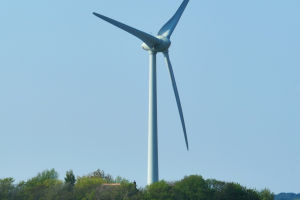A Siphon Coffee Maker is a unique and sophisticated appliance used for brewing coffee.
It operates based on the principle of the siphoning effect, which utilizes pressure differences to create suction and draw hot water from the lower chamber upward, where it combines with coffee grounds for brewing.
Finally, gravity brings the brewed coffee back down to the lower chamber, completing the brewing process.
Typically, a siphon coffee maker consists of two glass chambers connected by a tube. The lower chamber is filled with hot water, while the upper chamber holds the coffee grounds.
When the heat source beneath the lower chamber heats the water, it starts to evaporate and creates pressure. This pressure forces the water to move through the tube and into the upper chamber.
As the water rises, it mixes with the coffee grounds, allowing the brewing process to occur. Subsequently, as the heat source is removed and the lower chamber cools down, a partial vacuum is created, drawing the brewed coffee back through the tube and into the lower chamber.
The resulting coffee brewed with a siphon coffee maker possesses a rich and flavorful taste, often praised for its aromatic profile.
Unlike other brewing methods, the siphon coffee maker doesn't require a paper filter or a metal mesh, allowing the natural oils from the coffee beans to be retained, resulting in a unique and full-bodied flavor.
While the operation of a siphon coffee maker may seem intricate, mastering the appropriate brewing time and heat control allows coffee enthusiasts to enjoy the process and savor the exceptional quality of the final cup.
Siphon coffee makers have gained popularity among high-end coffee shops and coffee aficionados due to the exquisite brewing experience they offer.
The visual spectacle of watching the water move between chambers and witnessing the transformation of coffee grounds into a delightful beverage adds to the allure of using a siphon coffee maker.
The history of the Siphon Coffee Maker can be traced back to the early 19th century when it was initially invented by a Frenchman named Louis-Joseph Napolean Rieutord in the 1830s.
However, it wasn't until the 1840s that the siphon coffee maker underwent significant improvements by Jean-Baptiste de Belloy, another French inventor. Belloy introduced a rubber seal and a burner with adjustable heat, simplifying the operation and enhancing the overall functionality of the siphon coffee maker.
As technology advanced, the use of siphon coffee makers expanded beyond France, becoming popular in other countries during the late 19th and early 20th centuries. It became a favored brewing method, particularly in European and American coffee cultures.
However, with the advent of automatic coffee machines in the mid-20th century, the popularity of siphon coffee makers declined. These machines offered greater convenience and ease of use, leading to a decrease in the adoption of siphon coffee makers.
Nevertheless, in recent years, there has been a resurgence of interest in siphon coffee makers. This resurgence can be attributed to the revival of coffee culture and the pursuit of exceptional coffee quality.
Many coffee enthusiasts and professional baristas have rediscovered the distinctive advantages of siphon brewing, such as its ability to extract nuanced flavors and the captivating brewing process.
To make the most of a siphon coffee maker, several key considerations should be kept in mind:
1. Safety precautions: Take precautions when handling hot water and heat sources to avoid burns or fire hazards. Ensure the siphon coffee maker is placed on a stable surface, away from flammable materials.
2. Cleaning and maintenance: Thoroughly clean all components of the siphon coffee maker before and after use. This includes the glass chambers, filter, and tube. Regularly clean and replace the filter to maintain the quality and hygiene of the brewing process.
3. Water temperature control: Proper water temperature is crucial for optimal brewing with a siphon coffee maker. It is recommended to use hot water that is not boiling to avoid bitterness. Pay attention to controlling the water temperature to achieve the desired flavor profile.
In conclusion, using a siphon coffee maker requires attentiveness and patience. By experimenting with different variables and making adjustments, individuals can discover their preferred brewing method. Emphasize safety, cleanliness, and temperature control to fully enjoy the unique coffee experience that a siphon coffee maker provides.


